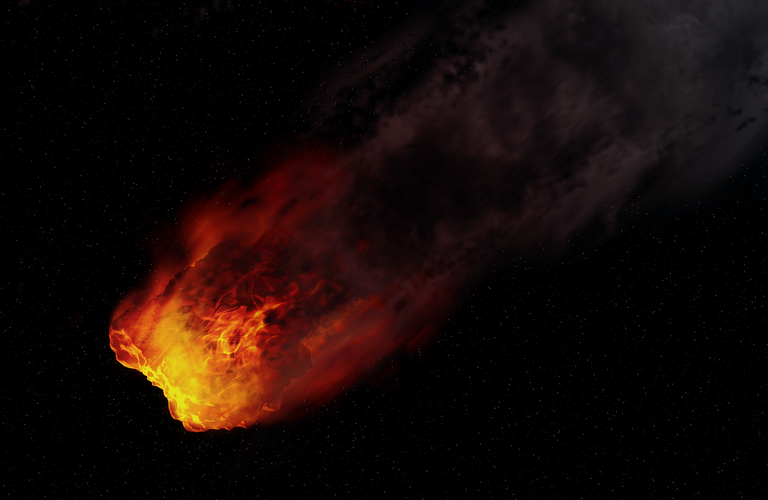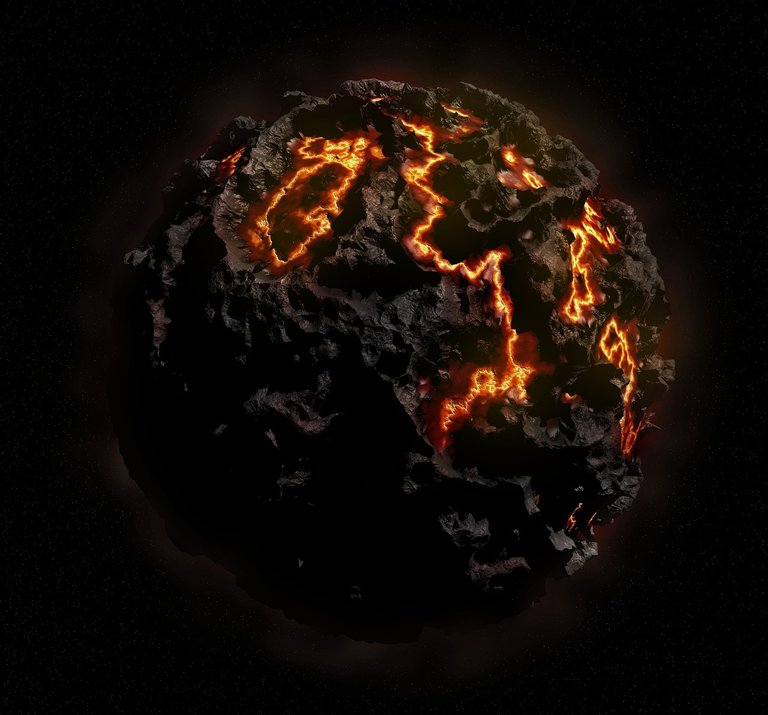Meteorites show transport of material in early solar system

Picture Credit:
Willgard (Source: Pixabay)
The consensus hypothesis on however planets structure is that they accumulate from a circle of residue and gas that pivots around another formed star. Proof for the structure of this protoplanetary circle in our own near planetary cluster originates from chondrites, a kind of light comprised of littler particles, or chondrules, that gathered along like a cosmic residue rabbit. "On the off chance that we get transport, we will comprehend the properties of the plate and induce however the planets were factory-made," said Qingzhu Yin, professional of earth and planetary sciences at the University of CA, Davis, and author on the paper mentioned in the journal reference below.
The material in chondrites is surprisingly previous, talking to further residue and wreckage and jetsam that from the first shut planetary system. Further proof originates from rocks from the planet and Moon and tests of infinite residue and extraterrestrial object material gathered by the romance mission and alternative house tests. Scientists will prove to be around wherever and once these meteorites formed by estimating the proportions of isotopes of elements, for instance, oxygen, metallic element, and metallic element within them.

Picture Credit: AlexAntropov86 (Source: Pixabay)
Past work by Yin's research facility and others demonstrated that meteorites fall into two general gatherings by the organization. Carbonaceous meteorites are thought to own begun within the external near the planetary cluster. Non-carbonaceous meteorites formed from the circle nearer to the sun wherever carbon-based and alternative unstable mixes were heated away. For what reason was there not all the additional mixing, if all the planets formed from the equivalent protoplanetary plate? The clarification is that as Jupiter shaped before, it corrugated a hole within the plate, creating a hindrance to the event of residue, Yin said. House specialists utilizing the ALMA radio reflector in Chile have watched the same marvel in protoplanetary circles around completely different stars intersection the Jupiter hole.
However many meteorites seem to be special cases to the present overall normal with an additional intensive mix of segments. Yin, UC Davis analysis man of science Curtis Williams, and their colleagues completed a degree by point investigation of isotopes from thirty meteorites. The thoroughbred that they fell into 2 explicit gatherings: the non-carbonaceous chondrites even as an alternative, additional traditional styles of a shooting star; and also the carbonaceous meteorites.

Picture Credit: AlexAntropov86 (Source: Pixabay)
At that time they contemplated singular chondrules from 2 chondritic meteorites, the Allende light that fell in Mexico in 1969 and also the Karoonda shooting star, that fell in Australia in 1930. These meteorites over up containing chondrules from each the inner and external near the planetary cluster. Some material from the inner near planetary cluster additional probably than not discovered the way to cross the Jupiter obstruction to accumulate with external shut planetary system chondrules into a light that billions of years when the very fact would tumble to Earth. How? There are 2 or 3 potential instruments, Williams aforementioned.
One is that there was still improvement along the plate midplane, disregarding the very actuality that it must are ended by Jupiter. The other is that breezes within the internal accessible planetary gathering could have heaved particles over the Jupiter gap. Both of those instruments could in like manner be to blame for internal accessible planetary gathering material that has moreover been found in comets by the Stardust mission.
The new examination assists with interfacing cosmochemistry, planetary sciences, and observance to grant a complete image of planet arrangement.
Reference:
- Materials provided by University of California - Davis.
Journal Reference:
- Curtis D. Williams, Matthew E. Sanborn, Céline Defouilloy, Qing-Zhu Yin, Noriko T. Kita, Denton S. Ebel, Akane Yamakawa, Katsuyuki Yamashita. Chondrules reveal large-scale outward transport of inner Solar System materials in the protoplanetary disk. Proceedings of the National Academy of Sciences, 2020; 202005235 DOI: 10.1073/pnas.2005235117
Congratulations @crazy-science! You have completed the following achievement on the Hive blockchain and have been rewarded with new badge(s) :
You can view your badges on your board and compare yourself to others in the Ranking
If you no longer want to receive notifications, reply to this comment with the word
STOPDo not miss the last post from @hivebuzz:
Thanks for your contribution to the STEMsocial community. Feel free to join us on discord to get to know the rest of us!
Please consider supporting our funding proposal, approving our witness (@stem.witness) or delegating to the @stemsocial account (for some ROI).
Please consider using the STEMsocial app app and including @stemsocial as a beneficiary to get a stronger support.